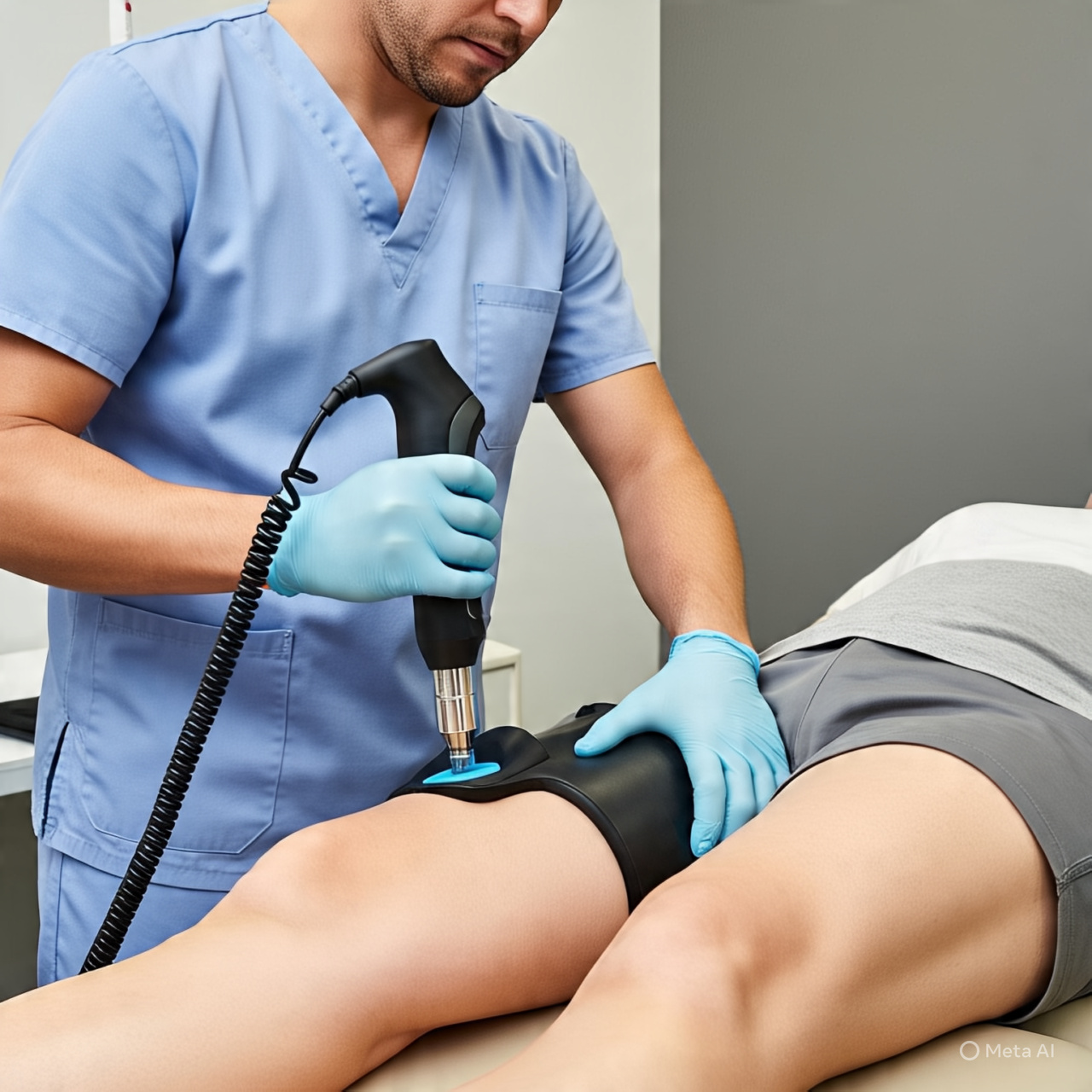Shockwave therapy is a non-invasive treatment technique that utilizes acoustic waves to stimulate healing in damaged tissues. Originally developed for various medical applications, including breaking up kidney stones, the technique has found a significant role in musculoskeletal medicine. By applying high-energy sound waves to specific areas of the body, practitioners aim to promote cell regeneration, improve blood circulation, and accelerate the healing process. As a relatively new modality in pain management and rehabilitation, shockwave therapy has garnered attention for its promising outcomes in treating various conditions, particularly those related to chronic pain and sports injuries.
Mechanism of Action
The underlying mechanism of shockwave therapy involves the application of acoustic waves that transmit energy to the affected tissues. These waves create microtraumas in the tissues, which triggers a biological response that increases the production of growth factors and enhances tissue regeneration. Additionally, the therapy is believed to break down calcium buildup and improve blood flow to the treated area. This combination of effects not only reduces pain but also facilitates faster recovery, making it an appealing option for patients struggling with persistent musculoskeletal issues.
Conditions Treated with Shockwave Therapy
Shockwave therapy has been studied for its efficacy in treating a wide range of conditions, including plantar fasciitis, tendinitis, shoulder pain, tennis elbow, and calcific shoulder. Patients who have not responded to traditional treatments, such as physical therapy or corticosteroid injections, often consider shockwave therapy as a viable alternative. The therapy is generally well-tolerated, with minimal side effects, making it an attractive option for those seeking relief from chronic pain and the limitations it imposes on daily life.
Efficacy and Research Findings
Numerous clinical studies have investigated the efficacy of shockwave therapy for various conditions. Research indicates that the therapy can provide significant pain relief and functional improvement in patients suffering from musculoskeletal disorders. For instance, a meta-analysis of numerous studies found that shockwave therapy was effective in reducing pain and improving function in individuals with plantar fasciitis. Similarly, studies showing positive outcomes in treating conditions like Achilles tendinopathy and lateral epicondylitis suggest that the therapy can be beneficial for athletes and active individuals.
However, while many studies report favorable results, some researchers call for more extensive trials with larger sample sizes and standardized protocols to fully understand the long-term effects and optimal treatment parameters. This ongoing research is essential for establishing shockwave therapy as a mainstream treatment option and ensuring its effectiveness across different patient populations.
Patient Experience and Safety Profile
For patients considering shockwave therapy, understanding the treatment experience is important. The procedure typically lasts between 5 to 15 minutes, depending on the size and complexity of the area being treated. Most patients report feeling a mild discomfort during the application of the sound waves, but it is generally manageable. Practitioners often adjust the intensity of the waves based on the patient’s tolerance to ensure comfort while still achieving therapeutic benefits.
In terms of safety, shockwave therapy is considered low-risk. Patients may experience temporary redness, swelling, or bruising at the site of treatment, but these side effects usually resolve quickly. Unlike surgical interventions or invasive procedures, shockwave therapy carries no significant recovery time, allowing patients to resume daily activities almost immediately. This safety profile, combined with its non-invasive nature, makes shockwave therapy an appealing option for many.
Integration into Pain Management and Rehabilitation
As healthcare continues to evolve, integrating innovative therapies like shockwave therapy into comprehensive pain management and rehabilitation programs is essential. This non-invasive approach can complement traditional treatments, providing patients with a broader array of options. By incorporating shockwave therapy into multidisciplinary treatment plans, healthcare providers can address the multifaceted nature of pain and optimize recovery outcomes.
In regions like California, shockwave therapy San Francisco clinics have seen growing demand as more patients seek effective, non-surgical solutions for chronic pain and sports injuries. Physical therapists, sports medicine specialists, and orthopedic surgeons are increasingly using this technology to enhance rehabilitation efforts. For athletes, the ability to recover quickly from injuries can be a game-changer, allowing them to return to their sport with improved performance and reduced pain. Additionally, for individuals with chronic pain conditions, shockwave therapy offers hope for regaining mobility and improving quality of life.
Future Directions and Considerations
As shockwave therapy continues to gain traction, future research will be critical in determining its best applications and refining treatment protocols. Investigating the optimal number of sessions, frequency, and intensity settings will help clinicians tailor treatment plans to individual patient needs. Furthermore, exploring the synergy between shockwave therapy and other modalities, such as physical therapy, acupuncture, or medications, could yield improved outcomes for patients.
Patient education is another crucial aspect of integrating shockwave therapy into pain management. Ensuring that individuals understand the potential benefits, limitations, and realistic expectations of the treatment will empower them to make informed decisions about their healthcare options.
In summary, shockwave therapy represents a promising advancement in the field of pain management and rehabilitation. With its non-invasive approach, favorable safety profile, and encouraging research findings, it has the potential to improve the lives of many individuals suffering from chronic pain and musculoskeletal conditions. As the medical community continues to explore and refine this innovative therapy, patients can look forward to enhanced treatment options that address their unique needs and support their journey toward recovery.





